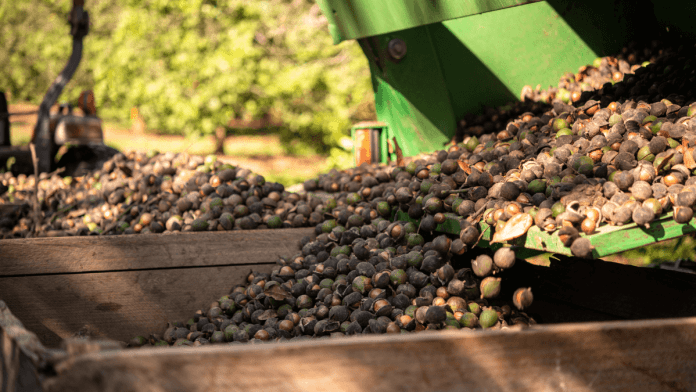News in Brief:
– Global in-shell macadamia production is projected to rise by 7% to 339,200 mt in 2024, with significant contributions from South Africa, Australia, China, and Kenya.
– Weather challenges and market dynamics, including the preference for quick cash sales of in-shell nuts, impact production and kernel availability.
Forecasts for the 2024 crop year indicate a significant rise in global in-shell macadamia production, with a projected increase of 7% to 339,200 metric tons (mt). This article explores the implications of this growth, particularly for farmers worldwide.

Key players in macadamia production
- South Africa
South Africa, the top producer, is expected to see a 15% increase in crop size. While the quality of macadamias is encouraging, there is concern about the high volumes sold as in-shell nuts, which could impact the availability of kernels for further processing. - Australia
Australia has started the current crop year with better farmgate prices and higher domestic demand. Despite some weather disruptions, production is set to grow by 16%. The ratio of in-shell to kernel sales is expected to normalize after a higher-than-anticipated sale of in-shell nuts in 2023. - China
China is expected to see a minimal production increase of 1%, primarily due to good flowering followed by dry weather in major producing provinces like Yunnan, Guangxi, and Guangdong. Record purchases of in-shell nuts in 2023 were driven by aggressive online promotions, with younger consumers showing interest in innovative macadamia-containing products. - Kenya
Initial projections indicate an 8% rise in production in Kenya due to new plantings bearing fruit. Continuous rains and new regulations allowing large in-shell exports to China have influenced the market. These regulations will be reviewed in November.
Brazil faces the largest production decline of 15% due to drought conditions. Despite the drop in production, domestic consumption has increased, with macadamias gaining popularity in bread and ice cream.
Improved industry cohesion and collaboration are expected to boost production in Guatemala despite dry weather challenges. Mexico and Costa Rica are also seeing production increases, with estimates of 2,000 mt and 5,000 mt respectively for 2024.
The trend of selling high volumes of in-shell nuts for quick cash can limit the availability of kernels, affecting processors and manufacturers. Better farmgate prices, as seen in Australia, can provide incentives for farmers to invest in quality and increase production.
Unpredictable weather patterns, such as droughts in Brazil and continuous rains in Kenya, highlight the need for farmers to adapt and invest in resilient farming practices. Changes in export regulations, like those in Kenya, can have significant impacts on market dynamics and farmgate prices.



